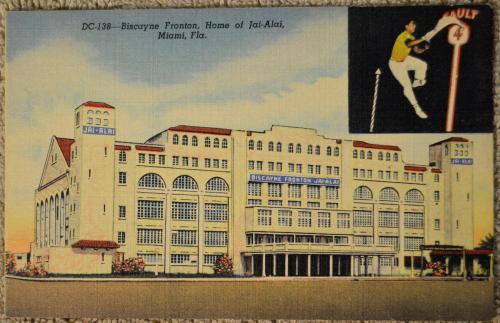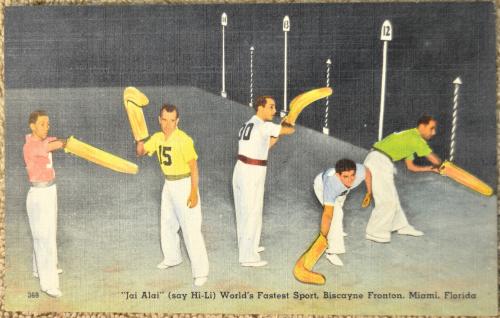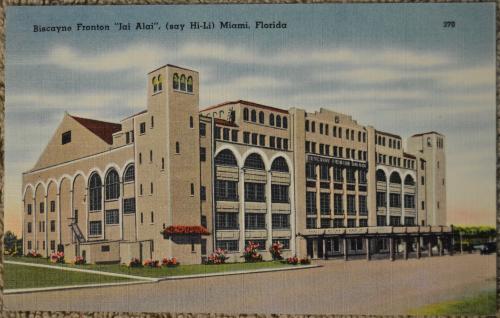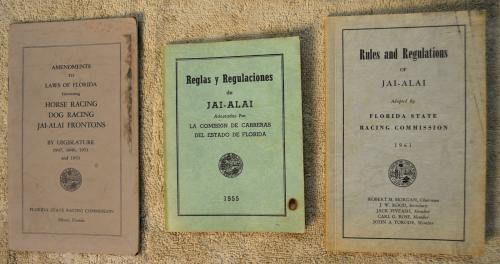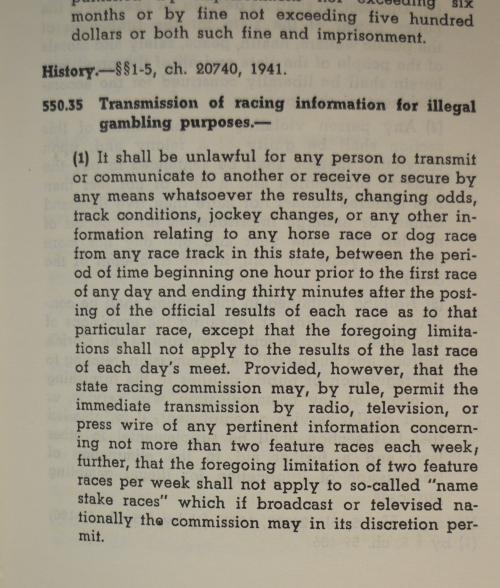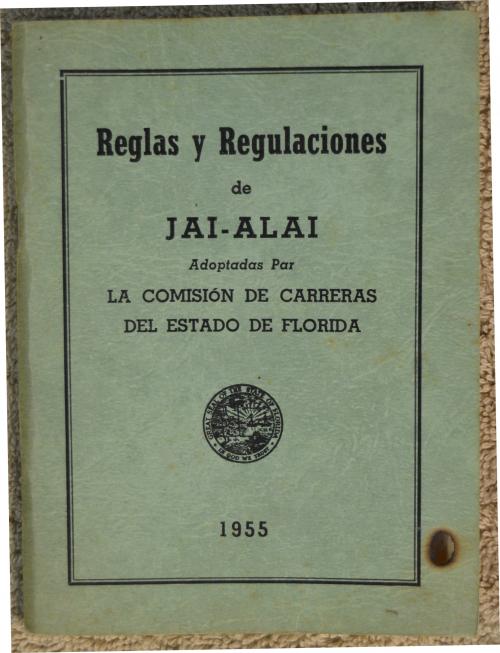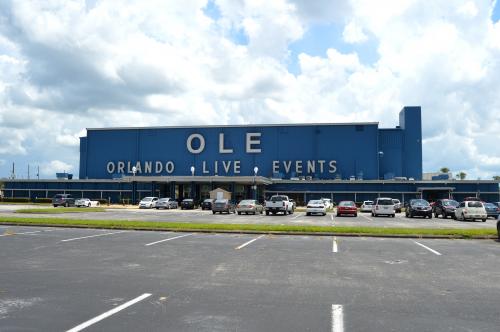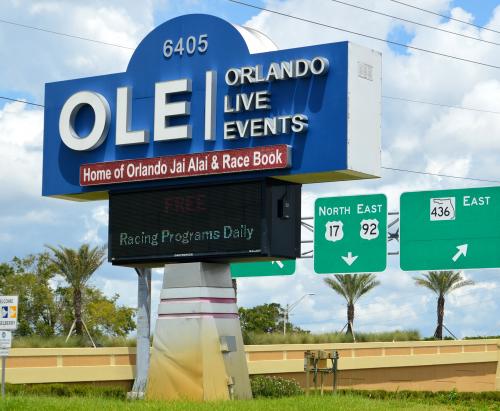Think of jai alai (say “hi-li”) as American Handball—you know, where two players bounce a rubber ball off a wall—with an attitude. A 180-mph attitude.
The game originated in the Basque region of north-central Spain in the 14th century. Basically, there are two players on a three-walled court, called a fronton, taking turns hurling a small ball, the pelota, at the wall until the other player misses.
They use a long wicker basket, the cesta, worn on the right hand to accelerate the ball’s flight. The professional players can toss it at 170-180 mph. The ball is not your friendly pink rubber toy; it is made of tightly wound wires covered with goat skin. Yes, there have been injuries and even fatalities.
The sport came to America in the late 19th and early 20th century, and took off as a popular attraction after the first fronton was built for the 1904 World’s Fair in St. Louis. The first professional game came to Florida in 1924 in Miami. The sport was immensely popular all over the state, especially in South Florida.
The Biscayne Fronton, later the Miami Fronton, dubbed “the Yankee Stadium of jai alai”, was one of the most elaborate in the world. These post cards, part of the collection of jai alai items at the Library of Florida History, hint at the draw the games offered to people far and wide. That draw remained strong from the 1920s through the 1980s. Of course, who would not want to come see skilled experts risk injury and death playing one of the fastest sports on the planet?
Oh, and then there was the gambling.
The game is played in a round-robin style, eight players or teams competing to be the first to earn an agreed upon score. When a player missed a shot another player would take his place. Like a horse race, there were plenty of odds to play to bet on an outcome.
Where there is gambling there have to be strict rules, and where you need rules, the state gets involved; in this case the Florida State Racing Commission.
While called “Rule Books”, most of the pages dealt with the legalities of gambling, such as this page about “transferring information” about the outcome of games, designed to keep the gambling field level for bettors at sites away from the game. Obviously, the lawyers got deep into the weeds of the operation.
To make sure there was no confusion in a sport dominated by Spanish-speaking players and fans, there was no hesitation about printing a Spanish version of the rules.
In its hay-decades, tens of millions of dollars were exchanged over the games. While adding to Jai alai’s popularity, gambling also lent an air of a criminal enterprise to the business. The attraction began to wane in the late 80’s and 90’s with the arrival of the Florida Lottery, internet gambling and casinos.
The Orlando Fronton, actually in Casselberry to the north of the city, tells the story. It is still there, but is now called “Orlando Live Events” and hosts conventions, fairs, concerts, receptions and wrestling.
However, as its sign shows, it has not lost touch with its roots and is one of six venues around the state offering Pari-mutuel betting on jai alai: Dania Beach, Fort Pierce, Jasper, Casselberry, Miami, and Reddick.
And, speaking of roots, how about the game itself? Well, some retired players and others are setting up amateur leagues to keep the sport alive aside from gambling. The City of St. Petersburg helped fund the first public amateur jai alai facility in the U.S. in 2008.
